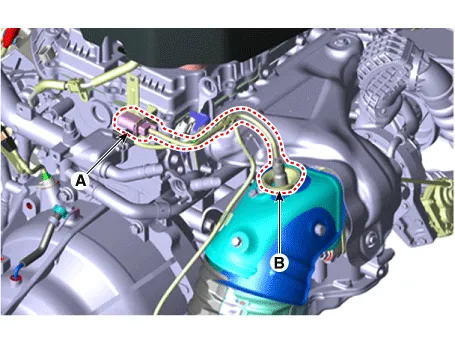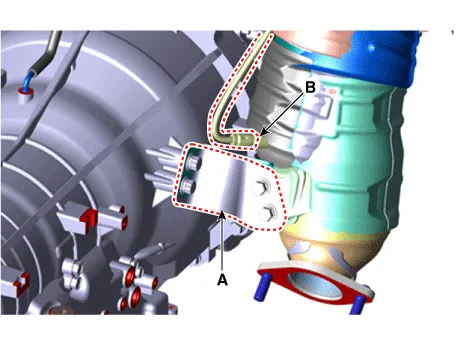Kia Stinger CK: Engine Control System / Heated Oxygen Sensor (HO2S)
Specifications
| Specification |
HO2S [Bank 1/Sensor 1]
|
Item |
Specification |
|
Heater Resistance (Ω) |
2.5 - 4.0 [20°C(68°F)] |
HO2S [Bank 1/Sensor 2]
|
Item |
Specification |
|
Heater Resistance (Ω) |
3.3 - 4.1 [20°C(69.8°F)] |
Description and operation
| Description |
Heated Oxygen Sensor (HO2S), consisting of zirconium and alumina, is installed on both upstream and downstream of the Catalytic Converter to detect the air/fuel ratio and send it to the ECM.
The sensor must be heated in order to operate properly. To keep it heated, the sensor has a heater which is controlled by the ECM via a duty cycle signal. When the exhaust gas temperature is lower than the specified value, the heater warms up the sensor tip.
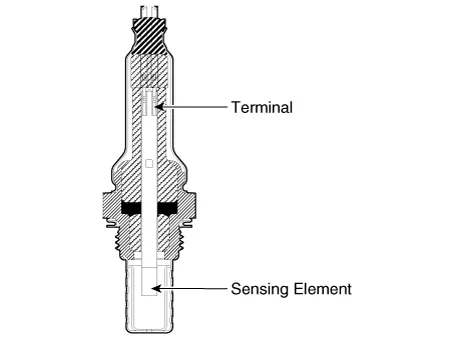
Schematic diagrams
| Circuit Diagram |
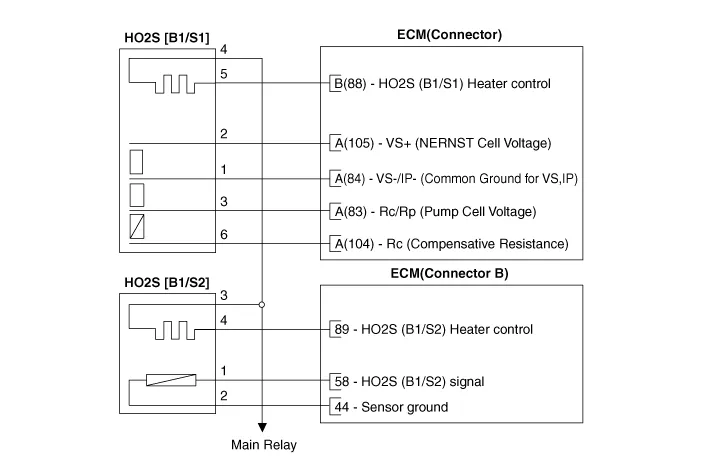
Harness Connector
[Bank 1 / Sensor 1]
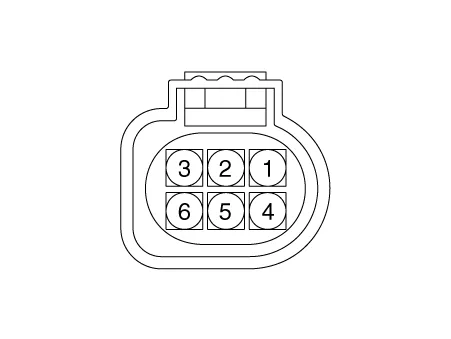
[Bank 1 / Sensor 2]
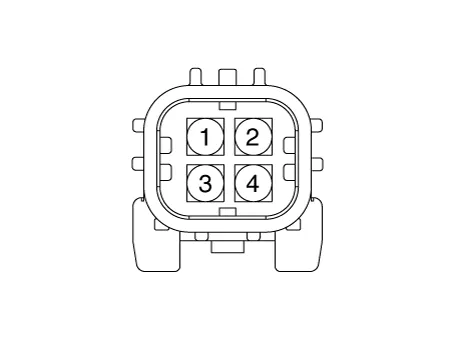
Repair procedures
| Inspection |
| 1. |
Switch "OFF" the ignition. |
| 2. |
Disconnect the HO2S connector. |
| 3. |
Measure resistance between the HO2S terminals 4 and 5 [B1/S1].
|
| 4. |
Measure resistance between the HO2S terminals 3 and 4 [B1/S2].
|
| 5. |
Check that the resistance is within the specification. |
| Removal |
Note that the SST (Part No. : 09392-1Y100 or 09392-2H100) is useful when removing the heated oxygen sensor. |
[Bank 1 / Sensor 1]
| 1. |
Switch "OFF" the ignition and disconnect the negative (-) battery terminal. |
| 2. |
Disconnect the connector (A), and then remove the sensor (B).
|
[Bank 1 / Sensor 2]
| 1. |
Switch "OFF" the ignition and disconnect the negative (-) battery terminal. |
| 2. |
Disconnect the connector (A).
|
| 3. |
Lift the vehicle. |
| 4. |
Remove the catalytic converter bracket (A). |
| 5. |
Remove the sensor (B).
|
| Installation |
|
| 1. |
Install in the reverse order of removal.
|
Other information:
Kia Stinger (CK) 2018-2023 Service Manual: Purge Control Solenoid Valve (PCSV)
Specifications Specification Item Specification Coil Resistance (Ω) 18.5 - 22.5 [20°C(68°F)] Description and operation Description Installed on the surge tank, the Purge Control Solenoid Valve (PCSV) controls the passage between the canister and the intake manifold.Repair procedures Inspection 1. Check belt for maintenance and abnormal wear of V-ribbed part. Replace if necessary. • Do not bend, twist or turn the drive belt inside out. • Do not allow the drive belt to come into contact with oil, water and steam.

